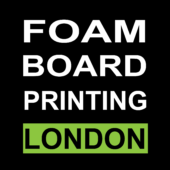Foam Core Board: A Versatile Wonder
In the realm of crafting, presentations, and even architectural modeling, one material stands out as a go-to for its versatility and utility: foam core board. Often underestimated for its unassuming appearance, this lightweight material packs a punch when it comes to providing structure, support, and a smooth surface for various projects.
Composition and Construction
Foam core board, also known simply as foam board, is composed of three layers: a central core of polystyrene foam sandwiched between two outer layers of paper or plastic. The foam core provides the board with its lightweight and rigid properties, while the outer layers offer a smooth and often easily printable surface. This construction makes foam core board sturdy yet easy to cut, shape, and manipulate, making it an ideal choice for a wide range of applications.
Versatility in Applications
One of the primary reasons for the widespread popularity of foam core board is its versatility. From school projects and art displays to architectural models and signage, foam core board finds its way into numerous creative endeavors. Its lightweight nature makes it easy to transport, while its rigidity ensures stability once in place.
In the realm of crafting, foam core board serves as a reliable base for various projects. Whether creating intricate dioramas, custom photo frames, or decorative wall art, its smooth surface readily accepts paints, adhesives, and other embellishments. Artists appreciate its ability to serve as a stable canvas for painting or drawing, while hobbyists find joy in its ease of manipulation for creating miniature landscapes or architectural mock-ups.
In educational settings, foam core board becomes a staple material for student presentations and science fair displays. Its durability allows for multiple uses, and its affordability makes it accessible to schools with tight budgets. Students can easily cut and assemble foam core board to create visually appealing presentations that effectively communicate their ideas.
Beyond the realm of art and education, foam core board finds utility in professional settings as well. Architects and designers use it to create scaled models of buildings and prototypes, allowing clients to visualize projects before construction begins. Its lightweight yet sturdy construction makes it an ideal material for showcasing designs at presentations or exhibitions.
Conclusion
Foam core board may seem like a simple material, but its versatility and utility make it an indispensable tool for artists, educators, designers, and hobbyists alike. Its lightweight construction, combined with a smooth surface and easy manipulability, make it suitable for a wide range of applications. Whether used in crafting, education, or professional settings, foam core board continues to prove its worth as a versatile wonder in the world of creative endeavors.
